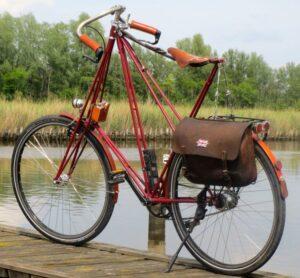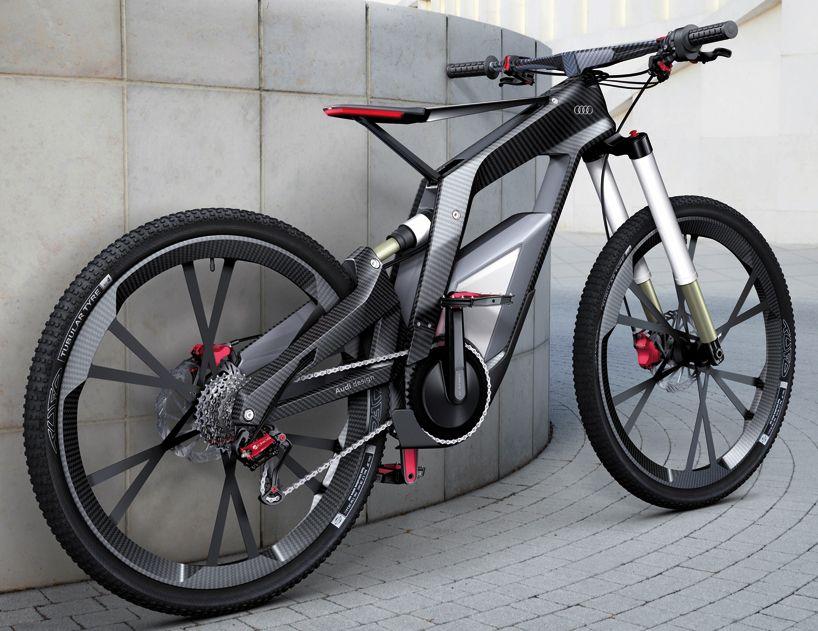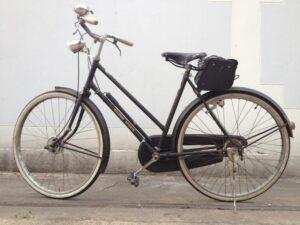Introduction
Staģes Cycling, a timeless and versatile form of transportation and recreation, offers an array of benefits to individuals and communities alike. Whether it’s for commuting, leisure, fitness, or competition, cycling provides a unique experience that connects people with their environment and fosters a sense of freedom.
To better understand the world of cycling, it’s essential to delve into the concept of ” staģes cycling,” a term that encompasses various aspects of this popular activity. In this article, we will explore the staģes of cycling, define what it entails, examine its benefits and drawbacks, explore its practical applications, and highlight its significance in contemporary society.
Defining staģes cycling
staģes cycling refers to the structured progression and development within the world of cycling, from beginner to advanced levels. This concept recognizes that cycling is not merely a monolithic activity but a journey with various stages and milestones. Stages cycling encompasses a wide range of cycling experiences, including recreational cycling, commuting, touring, and competitive cycling.
The stages of cycling are not limited to skill level or proficiency but also encompass personal goals, interests, and cycling styles. These stages help individuals set objectives, track progress, and enjoy the diverse benefits that cycling offers. If you want to buy a good E-cycle, then click
Stage 1: The Novice Cyclist
The journey begins with that first pedal stroke. As a novice cyclist, you’re exploring the basics of riding a bicycle. You’re learning how to balance, steer, and control your bike. At this stage, it’s crucial to start with a comfortable, well-fitted bike and prioritize safety. Consider wearing a helmet, and always obey traffic rules.
Tips for Novice Cyclists:
- Practice in a safe, open area.
- Gradually increase your riding time and distance.
- Seek guidance from experienced cyclists or take a beginner’s cycling class.

Stage 2: The Recreational Rider
Once you’ve built confidence in your cycling abilities, you’ll likely transition into recreational riding. This stage is all about enjoying the sheer pleasure of cycling. Recreational riders often explore local trails, parks, and scenic routes, relishing the freedom of two-wheeled travel.
Tips for Recreational Riders:
- Explore new routes to keep things exciting.
- Invest in comfortable cycling apparel and accessories.
Join group rides or cycling clubs to meet like-minded enthusiasts.

Stage 3: The Commuter Cyclist
For those who choose cycling as a sustainable means of transportation, the commuter stage is where you make your daily commute on two wheels. Commuting by bike reduces your environmental footprint, promotes physical fitness, and can save you money on fuel and parking.
Tips for Commuter Cyclists:
- Plan your route for safety and efficiency.
- Maintain your bike regularly for reliability.
- Embrace rain or shine with suitable gear and clothing.

Stage 4: The Touring Enthusiast
Touring cycling involves embarking on long-distance journeys, often spanning several days or even months. Touring enthusiasts explore new landscapes, cultures, and destinations while building endurance and resilience. This stage is for those who crave adventure on their bikes.
Tips for Touring Enthusiasts:
- Invest in a sturdy touring bike designed for carrying gear.
- Plan your routes and accommodations in advance.
- Embrace self-sufficiency and carry essential tools and spare parts.

Stage 5: The Competitive Cyclist
For some, the lure of competition is irresistible. Competitive cycling includes various disciplines like road racing, mountain biking, track cycling, and BMX racing. At this stage, riders train rigorously, hone their skills, and may participate in races and events.
Tips for Competitive Cyclists:
- Establish a structured training plan.
- Work with a coach or join a competitive cycling team.
- Embrace a healthy diet and recovery regimen.

Stage 6: The Cycling Advocate
As you progress through the stages of cycling, you may find yourself becoming a cycling advocate. This stage involves advocating for cycling infrastructure, safety, and policies that promote cycling as a sustainable mode of transportation. Advocates work to improve cycling conditions in their communities.
Tips for Cycling Advocates:
- Join local cycling advocacy groups or organizations.
- Engage with policymakers and participate in community initiatives.
- Increase public understanding of the advantages of cycling and safe cycling techniques.

Stage 7: The Lifelong Cyclist
Ultimately, the stages of cycling lead to a lifelong commitment to the sport. Lifelong cyclists continue to ride for health, happiness, and the pure joy of cycling. They may transition between different stages throughout their lives, adapting to changing circumstances and goals.
Tips for Lifelong Cyclists:
- Keep your passion for cycling alive by setting new goals and challenges.
- Share your love for cycling with family and friends.
- Inspire others to join the cycling community and experience its benefits.
Benefits of Stages Cycling
Progression and Mastery: One of the most significant benefits of stage cycling is the opportunity for progression and mastery. Cyclists can start at a beginner level and gradually advance their skills and fitness, achieving a sense of accomplishment at each stage.
Physical Fitness: Cycling at different stages provides an excellent cardiovascular workout. It helps improve endurance, muscle strength, and overall physical fitness. Regular cycling can also aid in weight management.
Mental Wellbeing: Cycling has been shown to improve mental wellness. Bike riding, especially in scenic areas, can lower stress, improve mood, and improve mental clarity. It offers a chance for relaxation and mindfulness.

Environmental Sustainability: Commuting by bike is an eco-friendly alternative to motorized transportation. By opting for cycling as a means of commuting, individuals contribute to reduced air pollution and decreased traffic congestion.
Community Engagement: Cycling fosters community engagement. Group rides, charity cycling events, and cycling clubs provide opportunities for social interaction and the formation of bonds among cyclists.
Economic Savings: Compared to maintaining and fueling a car, cycling is a cost-effective mode of transportation. It reduces expenses related to fuel, vehicle maintenance, and parking fees.
Drawbacks of Stages Cycling
Safety Concerns:
One of the primary drawbacks of cycling is safety concerns, particularly in areas with inadequate cycling infrastructure. Cyclists may face risks from traffic accidents, poorly maintained roads, and adverse weather conditions.
Accessibility:
Cycling may not be accessible to everyone. Individuals with physical disabilities or those living in areas without suitable cycling infrastructure may find it challenging to participate in stages cycling.
Weather Dependency:
Weather plays a significant role in cycling feasibility. Extreme heat, rain, snow, and strong winds can limit the ability to cycle safely and comfortably.
Equipment Costs:
While cycling can be cost-effective in the long run, acquiring quality bicycles and accessories can initially require a significant investment.
Limited Storage:
Storing bicycles can be challenging for individuals with limited space, especially those living in apartments or tiny homes.
Use of Stages Cycling
Recreational Cycling:
For many individuals, cycling begins as a recreational activity, often during childhood. Recreational cyclists may ride casually through parks or neighborhoods, enjoying the freedom and joy of cycling.
Commuting
Cycling can be an efficient and eco-friendly mode of transportation for commuting to work or other daily activities. Cities worldwide are increasingly promoting cycling as a sustainable commuting option.
Touring:
Touring cycling involves long-distance journeys, often spanning multiple days or even months. Cyclists explore new landscapes, cultures, and destinations while touring. This stage can be a profoundly enriching and transformative experience.
Competitive Cycling
Competitive cycling includes various disciplines such as road racing, mountain biking, track cycling, and BMX racing. Cyclists at this stage often train rigorously and compete in events at the local, national, or international level.
Cycling Clubs and Groups
Many individuals join cycling clubs or groups to connect with like-minded cyclists and enjoy group rides. These clubs often cater to various skill levels and interests, creating a supportive community for cyclists.
Cycling Advocacy
Some cyclists become advocates for cycling infrastructure, safety, and policies that promote cycling as a sustainable mode of transportation. They work to improve cycling conditions in their communities.
Working with Stages Cycling
To make the most of stages cycling:
It’s essential to adopt a structured approach while remaining flexible to accommodate individual preferences and goals:
Goal Setting
Define your cycling goals for each stage, whether it’s improving fitness, participating in a charity ride, or mastering a new skill. Having clear objectives helps keep you motivated and focused.
Skill Development
As you progress through stages, focus on skill development. For example, if you are a beginner, start with basic bike handling skills and gradually advance to more complex techniques.
Safety First
Always prioritize safety. Wear appropriate safety gear, obey traffic rules, and stay informed about local cycling laws and regulations. Invest in a quality helmet and visibility gear for increased safety.
Safety is of paramount importance when cycling, whether you’re riding on city streets, rural roads, or mountain trails. Using the right safety equipment can help protect you in case of accidents and enhance your visibility to others on the road. Here’s a list of essential safety equipment for cycling:
- Bike Helmet: A properly fitted bicycle helmet is the most critical safety item for cyclists. It can protect your head in case of falls or collisions, reducing the risk of serious head injuries.
- Reflective Clothing: Wear bright, visible clothing to increase your visibility to motorists, especially in low-light conditions. Consider reflective vests, jackets, suits or accessories that catch the light.
- Gloves: Cycling gloves provide grip on the handlebars, protect your hands in case of falls, and can offer some cushioning for added comfort.
- Eye Protection: Sunglasses or clear glasses can shield your eyes from wind, debris, and insects. They also help improve your visibility in different weather conditions.
- Bike Lights: Use front and rear lights to make yourself visible to others, especially in low-light conditions or at night. Consider lights with different modes, such as steady and flashing.
- Bike Bell or Horn: A bell or horn can be useful for alerting pedestrians and other cyclists to your presence and intentions.
- Mirrors: Handlebar or helmet-mounted mirrors can help you keep an eye on traffic approaching from behind without having to turn your head.
- Reflectors: Most bicycles come with built-in reflectors, but you can add more to increase your visibility. Reflective tape on your bike’s frame and wheels is a good option.
- Pedal Reflectors: Pedal reflectors enhance your visibility from the side and can be especially helpful at night.
- Fenders and Mudguards: Fenders and mudguards help keep road debris, water, and mud from splashing onto you and your bike, improving safety and comfort.
- Lock: While not directly related to on-the-road safety, a sturdy lock is crucial to protect your bike from theft when it’s not in use.
- First Aid Kit: It’s a good idea to carry a basic first aid kit for minor injuries or accidents while cycling. This may include bandages, antiseptic wipes, and pain relievers.
- Repair Tools: Basic bike repair tools and supplies, such as a tire pump, spare inner tubes, tire levers, and a multi-tool, can help you address minor mechanical issues on the go.
- Cell Phone and Identification: Carry a fully charged cell phone for emergency calls, and ensure someone knows your planned route. Consider carrying some form of identification, such as an ID card or a note with your emergency contact information.
- Water and Nutrition: Staying hydrated and properly fueled is crucial for safety, especially on long rides. Carry a water bottle and some energy bars or snacks.
Remember that safety starts with proper bike maintenance, obeying traffic rules, and practicing defensive riding techniques. Always be aware of your surroundings, and respect the rules of the road to reduce the risk of accidents while cycling.
Training and Conditioning
If you aspire to become a competitive cyclist or tour long distances, consider structured training and conditioning programs. These can help improve your endurance, speed, and overall performance.
Community Engagement
Connect with the cycling community, whether through local clubs, online forums, or social media groups. Sharing experiences, tips, and advice with fellow cyclists can be highly motivating and enjoyable.
Environmental Responsibility:
Be environmentally responsible by minimizing your carbon footprint while cycling. Consider commuting by bike when possible and explore eco-friendly cycling practices.

Conclusion
Stages cycling offers a dynamic and multifaceted journey for individuals of all backgrounds and interests. Whether you’re a beginner discovering the joy of cycling, a commuter reducing your environmental impact, a touring cyclist exploring new horizons, or a competitive athlete pushing your limits, stages cycling has something to offer. While there are benefits and drawbacks to consider, the positive impact on physical fitness, mental wellbeing, community engagement, and the environment cannot be overlooked. By embracing the stages of cycling and setting meaningful goals, individuals can
how to select a good keyboarding cover



